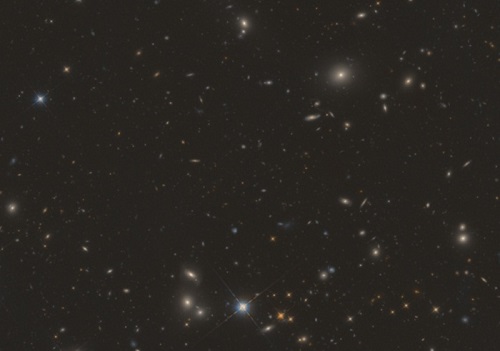Hubble spots largest near-infrared image to find universe's rarest galaxies

Follow us Now on Telegram ! Get daily 10 - 12 important updates on Business, Finance and Investment. Join our Telegram Channel
An international team of scientists has released the largest near-infrared image ever taken by the Hubble Space Telescope, enabling astronomers to map the star-forming regions of the universe and learn how the earliest, most distant galaxies originated.
To image an expansive patch of sky, the researchers led by those at the University of Toronto employed a new technique with Hubble known as Drift And SHift (DASH).
DASH creates an image that is eight times larger than Hubble's standard field of view by capturing multiple shots that are then stitched together into one master mosaic, similar to taking a panoramic picture on a smartphone.
DASH also takes images faster than the typical technique, snapping eight pictures per Hubble's orbit instead of one picture, achieving in 250 hours what would previously have taken 2,000 hours, explained the team in the paper to be published in The Astrophysical Journal.
The high-resolution survey named 3D-DASH will allow researchers to find rare objects and targets for follow-up observations with the recently launched James Webb Space Telescope (JWST) during its decades-long mission.
"Since its launch more than 30 years ago, the Hubble Space Telescope has led a renaissance in the study of how galaxies have changed in the last 10-billion years of the universe," said Lamiya Mowla, from the University of Toronto.
"The 3D-DASH programme extends Hubble's legacy in wide-area imaging so we can begin to unravel the mysteries of the galaxies beyond our own."
For the first time, 3D-DASH provides researchers with a complete near-infrared survey of the entire COSMOS field, one of the richest data fields for extragalactic studies beyond the Milky Way.
3D-DASH covers a total area almost six times the size of the moon in the sky as seen from Earth. This record is likely to remain unbroken by Hubble's successor JWST, which is instead built for sensitive, close-up images to capture fine detail of a small area.
The Hubble Space Telescope is a project of international cooperation between NASA and the European Space Agency.












 320-x-100_uti_gold.jpg" alt="Advertisement">
320-x-100_uti_gold.jpg" alt="Advertisement">












